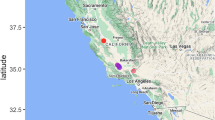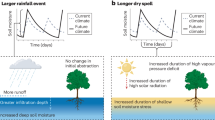Abstract
A number of exotic plants occur in the dry zone of central Burma. The annual rainfall of this area is only 25–35 in. in one monsoon, and the general vegetation is predominantly xerophytic—such as thorny shrubs, succulent species of Euphorbia and ephemerals. Some of these foreign plants are so well established that they could easily be mistaken for indigenous plants.
This is a preview of subscription content, access via your institution
Access options
Subscribe to this journal
Receive 51 print issues and online access
$199.00 per year
only $3.90 per issue
Buy this article
- Purchase on SpringerLink
- Instant access to full article PDF
Prices may be subject to local taxes which are calculated during checkout
Similar content being viewed by others
References
J. Bot., 69, 54 (1931).
Bolet. Soc. Broter, 6, 140 (1888).
Fl. Br. Ind., 7, 32 (1897).
"The Grasses of Burma", 50 (1945).
Author information
Authors and Affiliations
Rights and permissions
About this article
Cite this article
RHIND, D. Record of an African Fodder Grass from Central Burma. Nature 160, 195 (1947). https://doi.org/10.1038/160195a0
Issue date:
DOI: https://doi.org/10.1038/160195a0



